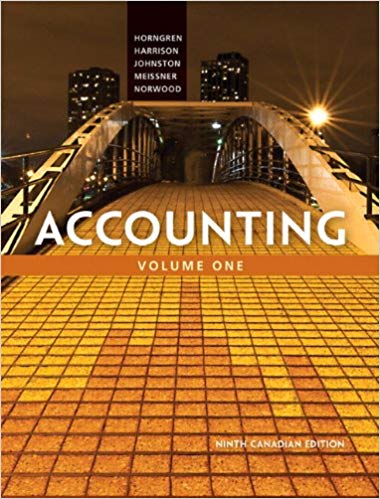This problem helps to develop journalizing skills by using an actual company's account titles for a selected
Question:
a. Made sales on account, $400,435.
b. Paid cash for advertising (general and administration expenses), $13,613.
c. Paid annual interest expense of $421,440.
d. Collected accounts receivable of $7,567.
e. Paid cash for prepaid rent, $36,330.
f. Purchased equipment on account for $5,000.
g. Paid cash for annual rent (general and administration expenses), $15,440.
Required
1. Set up T-accounts for Cash (debit balance of $7,165,119); Trade and Other Accounts Receivable (debit balance of $14,150,696); Prepaid Expenses and Deposits (debit balance of $487,430); Property, Plant, and Equipment (debit balance of $2,788,992); Accounts Payable and Accrued Liabilities (credit balance of $1,303,881); Revenue (credit balance of $18,427,019); General and Administration Expenses ($1,236,871 balance); Interest Expense ($0 balance).
2. Journalize Rainmaker's transactions a to g. Explanations are not required.
3. Post to the T-accounts and compute the balance for each account. Identify each posting by its transaction letter.
4. For each of the accounts, compare your balances to Rainmaker's actual balances as shown on the December 31, 2011, balance sheet and income statement. All your amounts should agree with the actual figures rounded to the nearest dollar.
Cash
Trade and other accounts receivable
Prepaid expenses and deposits
Property, plant, and equipment
Accounts payable and accrued liabilities
Revenue
General and administration expenses
Interest expense
5. Balance sheet and income statement accounts listed are really categories representing summarized account balances. List three accounts that would be reflected in each of the following categories:
a. Property, plant, and equipment,
b. Accounts payable and accrued liabilities, and
c. General and administration expenses.
Financial Statements
Financial statements are the standardized formats to present the financial information related to a business or an organization for its users. Financial statements contain the historical information as well as current period’s financial... Accounts Payable
Accounts payable (AP) are bills to be paid as part of the normal course of business.This is a standard accounting term, one of the most common liabilities, which normally appears in the balance sheet listing of liabilities. Businesses receive... Accounts Receivable
Accounts receivables are debts owed to your company, usually from sales on credit. Accounts receivable is business asset, the sum of the money owed to you by customers who haven’t paid.The standard procedure in business-to-business sales is that... Balance Sheet
Balance sheet is a statement of the financial position of a business that list all the assets, liabilities, and owner’s equity and shareholder’s equity at a particular point of time. A balance sheet is also called as a “statement of financial...
Fantastic news! We've Found the answer you've been seeking!
Step by Step Answer:
Related Book For 

Accounting Volume 1
ISBN: 978-0132690096
9th Canadian edition
Authors: Charles T. Horngren, Walter T. Harrison, Jo Ann L. Johnston, Carol A. Meissner, Peter R. Norwood
Question Posted:





